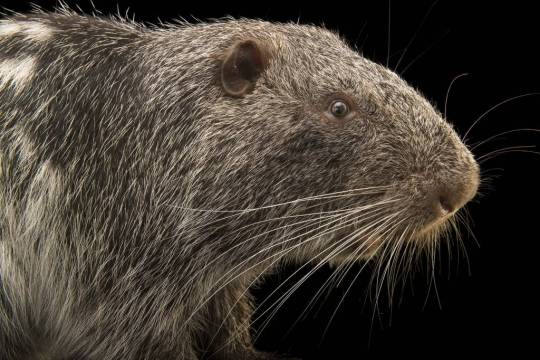#Genus: Myoprocta
Explore tagged Tumblr posts
Video
Acouchi by Smithsonian's National Zoo Via Flickr: Photo Credit: Smithsonian's National Zoo With temperatures soaring, the Smithsonian’s National Zoo continues to take good care of its creatures—human and non-human alike! Here’s what we do for our animals in this heat: •Most of the animals that can go outside are offered a choice year round—to go outside or to stay in their indoor exhibit. Most indoor exhibits are cooled with AC in the summer and warmed with heat in the winter. •Giant pandas have air-conditioned and radiant water-chilled grottos. They have AC indoors. They’re not huge fans of heat, so on hot days they mostly stay inside. •Many animals are offered fruitsicles as enrichment, which can be particularly refreshing this time of year. Fruitsicles are popsicles—they are usually diluted fruit juice frozen with cut-up chunks of fresh fruit in them. Gorillas, elephants and other bears enjoy these treats, too. (Note that these aren’t just a summertime treat! They receive them year-round.) •Some animals have the option of taking a dip in their outdoor pools: Andean bears, pandas, lions, tigers, anteaters and otters. Others are acclimated to this weather. Our visitors have a number of options for staying cool: •Water fountains are available around the park. •They can enjoy a number of “misters” around the Zoo. •The Zoo sells a variety of ice cream and frozen treats, along with cold beverages and bottled water. •All of our animal houses are air conditioned.
#Species: acouchy#Genus: Myoprocta#Family: Dasyproctidae#Order: Rodentia#Class: Mammalia#Phylum: Chordata#Kingdom: Animalia#Summer themed enrichment#Washington#DC#USA#flickr
1 note
·
View note
Photo










The pacarana (Dinomys branickii) is a rare and slow-moving hystricognath rodent indigenous to South America. Native Tupi people call it the pacarana (false paca) because it is superficially similar to the paca, a different rodent which is not in the same family. It is the world’s third-largest rodent in terms of length. The pacarana has a chunky body and is large for a rodent, weighing up to 33 lbs and measuring up to 31 inches in length, not including the thick, furry tail.
The scientific name of the genus comes from one of the same Greek words as the term “dinosaur”, which means “terrible (or terrifying) lizard”. “Dinomys” literally means “terrible mouse”! Dinomys branickii is the sole survivor of an ancient and once very diverse family of South American rodents, the Dinomyidae, which split off from other rodent families about 17-21 million years ago.
As the Dinomyidae diversified into new ecological niches, they also diversified in body size. The smallest of the fifty known fossil Dinomyidae species, Myoprocta, had a mass of only 1 kg. But most of the diversification wasa towards larger body sizes. Some of these “mice” had body sizes approaching those of hippopotamus, rhinoceros, and buffalo!!! “Terrible mouse” indeed! The largest Dinomyid, Josephoartigasia monesi, weighed about 1000 kg (one ton), the largest rodent that ever lived. Its front incisors were disproportionately huge, and may have been used to dig, or to fight. South America was full of buffalo-sized rats until continental drift linked it to Central America, introducing new forms that could in turn out-compete or eat these giants.
The pacarana is nocturnal and is found only in tropical forests of the western Amazon River basin and adjacent foothills of the Andes Mountains. It ranges from northwestern Venezuela and Colombia to western Bolivia, including the Yungas. It is common in Cotapata National Park in Bolivia.
The pacarana is the sole extant member of the rodent family Dinomyidae in the infraorder Caviomorpha; the paca that it resembles in appearance is in a different Caviomorph family, the Cuniculidae. Initially, the pacarana was regarded as a member of the superfamily Muroidea, that includes the true mice, but that view was abandoned in the face of evidence that suggests that the pacarana is in the family Dinomyidae together with extinct animals such as Phoberomys pattersoni and Josephoartigasia monesi, prehistoric giant rodents that lived in South America several million years ago.
Pacaranas typically are found in family groups of four or five.
[x] [x]
211 notes
·
View notes
